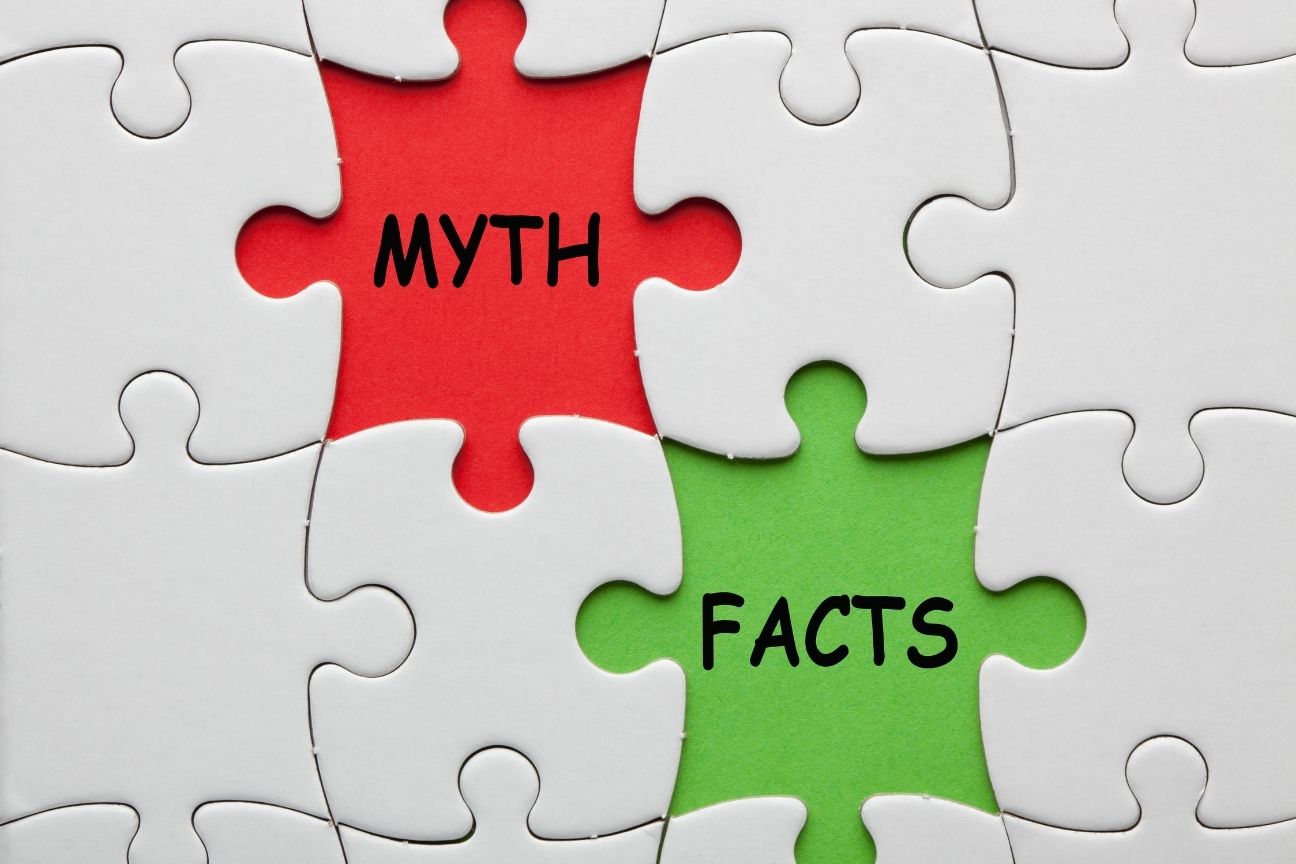Mold is a common issue for homeowners and businesses alike, often leading to confusion and misconceptions about how to handle it. Many fall for myths surrounding mold remediation that can lead to ineffective treatments and ongoing problems. This article debunks six prevalent mold remediation myths to empower you with accurate knowledge and effective solutions.
Introduction
Mold is more than just an unsightly nuisance. It poses potential health risks and damages property if left unchecked. Mold spores can trigger allergies, respiratory problems, and other health issues. Understanding mold and its effects is essential for homeowners and businesses.
However, myths surrounding mold and its remediation often lead to confusion. These misconceptions can cause ineffective treatments and worsen problems. For instance, many believe that all mold is dangerous or that DIY methods can effectively tackle severe infestations. These ideas can lead to misguided actions.
By debunking common myths, we can empower ourselves with accurate information. This insight leads to better decisions regarding mold prevention and treatment. Whether you’re dealing with a small leak or a significant mold outbreak, knowing the facts is crucial.
In the upcoming sections, we will break down each myth about mold remediation. We’ll discuss what’s true and what’s not. This way, you can navigate mold issues with confidence and clarity. Let’s get started and set the record straight!
Myth 1: All Types of Mold Are Dangerous
Mold often strikes fear in the hearts of homeowners, but not all molds are created equal. While it’s true that some molds can pose serious risks, many molds are merely harmless. Understanding this difference is essential for effective mold management.
Identifying Harmful Molds
Certain mold types can lead to health problems, especially among sensitive individuals. For example, Stachybotrys chartarum, also known as black mold, can produce mycotoxins. Exposure to this mold can lead to respiratory issues and even more severe health conditions.
On the other hand, many molds, like Aspergillus niger or Penicillium, often show up in homes. These common molds usually do not pose significant health risks. However, that doesn’t mean they should be ignored. Allergies and respiratory issues can still arise from prolonged exposure, just not as severe as with harmful molds.
Why Fear is Misplaced
The fear surrounding all molds harms homeowners and businesses. This myth may lead to unnecessary panic and often prompts over-the-top remediation measures. It’s essential to assess the type of mold present before jumping to conclusions.
Most molds thrive in damp environments. If you spot mold, don’t just panic. Take a deep breath, and consider reaching out for a professional evaluation. Qualified experts can identify the mold type and suggest appropriate action. This approach protects both your health and your property.
When to Be Concerned
So, when should you worry? If you suspect toxic mold or suffer health issues that worsen indoors, take action. Consult a mold remediation expert who can perform tests and safely remove harmful molds. Remember, knowledge is power! Understanding which molds to worry about helps you make informed decisions.
Stay vigilant about moisture control and regular inspections, and you’ll create a safer space for everyone. By debunking the myth that all molds are dangerous, you empower yourself to take proactive steps against mold without unnecessary fear.
Myth 2: Bleach is the Best Solution for Mold Removal
Many people believe bleach is a foolproof way to eliminate mold. However, this common myth can lead to bigger problems. While bleach may kill some surface molds, it does not fully address the root cause of mold growth. Simply put, it’s not the best solution.
Why Bleach Falls Short
When you use bleach on porous materials, like wood or drywall, it doesn’t penetrate deep into the surface. Instead, it kills surface mold but leaves spores behind. These spores can quickly regrow if the conditions are right. Additionally, bleach can produce harmful fumes and irritate the respiratory system. It’s not safe for everyone, especially in enclosed spaces.
Better Alternatives for Mold Removal
Instead of bleach, consider using products that are more effective for mold remediation. Solutions containing hydrogen peroxide or vinegar can be more beneficial. Hydrogen peroxide can penetrate porous materials and kill mold spores effectively. Vinegar, on the other hand, is a natural option that can disrupt the mold’s growth cycle.
You can also use commercial mold removers specifically designed for this purpose. These products often target the main issues caused by mold rather than just masking the problem. In many cases, hiring professionals for mold remediation is the best decision. They can address moisture sources and utilize specialized equipment that ensures thorough mold removal.
Focus on Prevention
In addition to using the right products, focusing on prevention is vital. Mold thrives in damp conditions. Therefore, controlling moisture levels in your home is essential. Use dehumidifiers and fix any leaks promptly. Maintaining good ventilation in areas like bathrooms and basements also helps.
In summary, while bleach seems like a quick fix for mold, it’s not the end-all solution. Consider more effective alternatives and always prioritize thorough mold prevention techniques. Your health and home deserve it.
Myth 3: Mold Only Grows in Humid Environments
Many people believe that mold only thrives in damp and humid situations. This myth overlooks the fact that mold can flourish in various environments. It doesn’t take a swampy basement to create ideal conditions for mold growth. In reality, the right combination of moisture, food, and temperature can lead to mold in surprisingly dry environments.
Mold Doesn’t Need High Humidity to Thrive
Mold spores are everywhere. They travel through the air and can settle on almost any surface. While high humidity levels can encourage growth, mold can still develop in conditions with relatively low humidity. For instance, frequent temperature fluctuations can create condensation in unexpected places, such as behind walls or under sinks.
Examples of Unlikely Mold Growth Areas
Think about your bathroom or kitchen. While these areas can be prone to high humidity, mold can also take root in less obvious places. Consider the following scenarios:
Air Conditioned Spaces: Air conditioning can lower humidity but also creates condensation on ducts and units. If these areas aren’t properly maintained, they can harbor mold.
Leaky Pipes: Even small leaks can lead to moisture buildup behind walls or under floors, providing a perfect habitat for mold growth.
Poor Ventilation: Areas with inadequate airflow can accumulate moisture, allowing mold to thrive even in seemingly dry conditions.
- Dried Out Flowers or Houseplants: An overlooked source of moisture can be decaying plant matter. In a dry kitchen or living room, this can foster mold growth if left unattended.
The Shift in Understanding Mold
To truly tackle mold issues, we need to shift our understanding. Instead of only worrying about high humidity zones, we must recognize how seemingly safe places can contribute to mold growth.
Always monitor areas prone to moisture. Check under sinks, around windows, and other typically dry spaces for any signs of mold. By knowing that mold can grow in a variety of conditions, you can take proactive measures to prevent it from becoming a problem in your home or workspace.
Taking action today can keep your living environment healthy. If you suspect mold, consider reaching out to a professional for a thorough inspection. Preventing mold is easier when you understand its potential hiding spots!
Myth 4: Once Mold is Removed, it Will Never Return
Many believe that simply removing mold means the problem is solved for good. Unfortunately, this is a common misconception. The truth is, mold can easily find its way back if the right conditions are not addressed.
Understanding Mold Growth
Mold needs three primary elements to thrive: moisture, a food source, and suitable temperatures. Even after removal, mold spores can linger in the environment. They might not be visible but remain ready to grow when exposed to moisture. For instance, if a leak occurs or humidity levels rise, those spores can reactivate. As a result, you may find mold returning sooner than you expected.
The Importance of Addressing Moisture Sources
To truly prevent mold from coming back, you must address the moisture sources in your space. Inspect areas like basements, attics, and bathrooms, as they are often prone to dampness. Ensure that roofs don’t leak, and gutters are clean and properly routed away from your foundation. Implement dehumidifiers in areas with persistent moisture. By doing this, you help prevent mold spores from transforming into a visible problem again.
Ongoing Mold Awareness
Even after effective remediation, stay vigilant. Regularly check for signs of water damage or mold growth. Conduct inspections every few months, especially during wet seasons. This proactive approach helps ensure your living environment remains mold-free. Remember, the goal is not just to remove existing mold but to eliminate the conditions that allow it to thrive again.
In summary, while removing mold is essential, it’s just one piece of the puzzle. Understanding how mold can return and taking steps to prevent it will safeguard your home or business from future issues. The fight against mold is ongoing, but being informed gives you the upper hand.
Myth 5: DIY Mold Removal is Just as Effective as Professional Remediation
Mold removal might seem like a straightforward task. However, diving into DIY methods can pose serious risks. While many homeowners feel confident tackling this problem, they often underestimate the complexity involved.
The Risks of DIY Mold Removal
First, let’s discuss the common hazards tied to DIY approaches. Mold can trigger health issues, especially with improper handling. Exposure to mold spores can lead to respiratory problems and allergic reactions. Without the right equipment, you may inadvertently spread spores throughout your home, worsening the situation.
In addition, many molds release mycotoxins. These toxic substances can be harmful when disturbed. A DIY attempt might stir up these spores and toxins, exposing you and your family to increased risk. Therefore, understanding the risks associated with mold removal is critical.
The Value of Professional Services
Opting for professional mold remediation services offers numerous benefits. For example, experienced professionals use specialized equipment to identify and contain mold effectively. They understand the science behind mold growth and can address underlying moisture issues.
Another advantage is that these professionals have access to advanced cleaning agents and protective gear, ensuring safe and effective removal. Furthermore, many companies offer guarantees on their work, giving you peace of mind that you’ve made a sound investment.
Professional services also conduct thorough inspections. They check for hidden mold that an untrained eye may overlook, preventing future infestations. Without comprehensive testing, some types of mold may remain undetected, waiting to resurface.
Myth 6: You Can Identify All Forms of Mold by Sight Alone
Many people believe that they can identify all types of mold just by looking at it. This is simply not true. Mold comes in various shapes, sizes, and colors. While some molds are visible and easily recognized, others may hide from plain sight. Professionals recommend thorough testing to identify mold accurately.
The Limitations of Visual Identification
Relying solely on what you see can be misleading. For example, certain molds like Stachybotrys (commonly known as black mold) can appear under various conditions. However, many other hazardous molds look harmless. If you only check visible surfaces, you miss potential threats lurking behind walls or under floors.
The Importance of Professional Mold Testing
Professional mold testing is crucial for accurate identification. Experts utilize specialized equipment and techniques to detect mold spores in the air and surfaces. This method reveals hidden mold that could be thriving out of sight. Moreover, testing can determine the species of mold, which is essential for assessing health risks.
Specialized Equipment in Mold Detection
Professionals often use tools like air samplers, moisture meters, and thermal imaging cameras. These instruments help locate moisture sources and identify hidden mold colonies. By using advanced technology, experts can provide a comprehensive assessment and appropriate remediation recommendations.
Recognizing the Signs of Mold
Even if you can’t see mold, you may notice other signs indicating its presence. These signs include damp spots, strange odors, and increased allergy symptoms. If you suspect mold but can’t find it, contacting a mold remediation professional is your best course of action.
In conclusion, do not rely on visual inspection alone. Understanding the limitations of your own observations can prevent costly mistakes. Always prioritize professional testing to keep your environment safe and healthy.
Conclusion
Understanding mold remediation is crucial for maintaining a safe living environment. Throughout this article, we’ve debunked several myths that often mislead homeowners and businesses.
Key Takeaways on Mold Myths
Here are the main points we’ve covered:
Not all types of mold are harmful.
- While some molds can pose health risks, many are harmless.
- Recognizing the difference can help alleviate unnecessary panic.
Bleach is not the best solution for mold removal.
- There are more effective cleaning agents available.
- Mold thrives in diverse conditions, not just humid ones.
Mold can return after removal.
This happens if moisture sources remain unaddressed.
Mold spores can lie dormant, waiting for the right conditions to reactivate.
DIY mold removal may lack effectiveness.
- Those who think they can handle mold on their own often end up with incomplete solutions.
- Professional services ensure comprehensive mold removal and proper hazardous material management.
You cannot identify all forms of mold by sight alone.
- Some molds are invisible and require expert testing.
- Professional assessments help identify even hidden mold issues.







